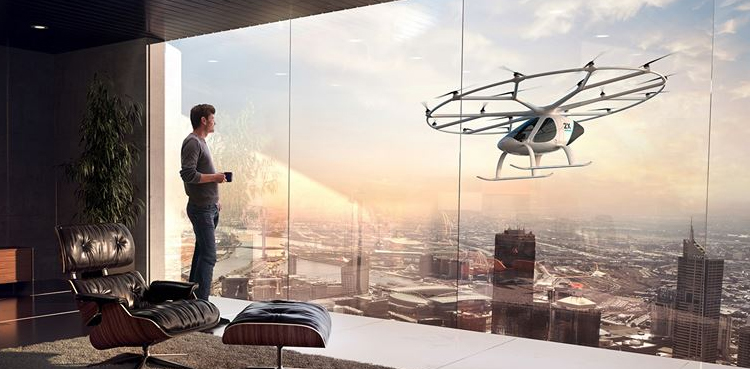
Flying taxis on the anvil

In quite a different manner, if all goes according to plan, Volocopter’s two-seater electric aircraft, VoloCity, will be carrying passengers around Paris. It will be the first service in Europe to use an electric vertical take-off and landing (EVTOL) aircraft.
Dozens of companies around the world have been developing flying taxis, known as EVTOL aircraft, promising quieter, cheaper and emission-free aircraft that can land right in the heart of cities. Volocopter expects to get the European aerospace regulator, EASA, to clear its machine, the VoloCity to carry passengers in the next few months so they can be ready for Paris Olympics in a year’s time. Three routes will connect the centre of Paris with the city’s airports and heliport. Volocopter will also offer round trips for sightseeing.

Much work has gone into organising flight paths and landing spots, called vertiports – not easy in a crowded city like Paris. Moreover, in the coming years what will be needed would be to prove that there is a market for their aircraft. Batteries remain the biggest problem as they remain heavy and expensive curtailing the range and limits the cost advantages of EVTOL aircraft, over helicopters, trains and cars. The VoloCity has a range of 22 miles, that is enough for short city hops but is not very far compared to the range of a helicopter. It is expected is that more powerful, cheaper batteries will emerge, allowing Volocopter to build a bigger aircraft that will be able to offer services at lower prices.
Lilium, also based in Germany, has already developed a larger EVTOL. Designed to carry up to six passengers it is an elegant looking machine. Rather than using rotors like Volocopter, Lilium uses 30 electric jets that can be tilted in unison to swing between vertical lift and forward flight. It expects to get certification from EASA in 2025. Lilium says there is potentially a huge market for such an aircraft which can offer connections around congested cities or services where rail links are poor. It is pointed out that Shenzhen Eastern General Aviation (Heli-Eastern) plans to buy 100 Lilium aircraft.
Heli-Eastern runs air links in the Greater Bay region of China, which includes Hong Kong, Shenzhen and Macao. With mountains, many islands and peninsulas it can be a nightmare to get around.
Like Volocopter, Lilium is banking on improving battery technology to make its aircraft competitive. Currently there remains uncertainty over the costs of batteries but it is believed prices will go down and capacity will go up. It is thought that the EVTOL industry can piggyback on the advances made in batteries for cars. There is no reason why batteries should be more expensive than any automotive battery because the production process is exactly the same. Despite that optimism, some experts are sceptical about the expectations of the EVTOL industry when it comes to batteries.

In order to be economic, the aircraft would need to be charged quickly. The quick charge and discharge puts a heavy toll on the battery requiring a different and more expensive system than that of a car. The present lack of battery capacity limits the conditions that EVTOL aircraft can fly in.
A helicopter is likely to have the range to fly around a storm, EVTOL aircraft with a much more limited range would not be able to do that. As well as improving the battery technology, the new EVTOL firms will have to set up factories to produce their aircraft in greater numbers. That is likely to be an expensive process as EVTOL aircraft use the same processes as the aircraft industry which are not suitable for low-cost, high-rate production. Aviation consultants specialising in electric aviation agree that battery technology rollout is a challenging process but it is accelerating.
They also advise the new firms will have to get much bigger as it is crucial for the industry to scale-up to avoid adopting a model limited to business travellers or financially privileged individuals. In April, Volocopter opened its first assembly line in Bruchsal, near Stuttgart in southern Germany, capable of producing 50 aircraft a year but it hopes by the end of the decade to be producing between 5,000 and 7,000 aircraft every year. Aviation experts acknowledge that there is much work and investment to be done. TW
from Science and Technology News - Latest science and technology news https://ift.tt/HmR2DW9



0 Response to "Flying taxis on the anvil"
Post a Comment